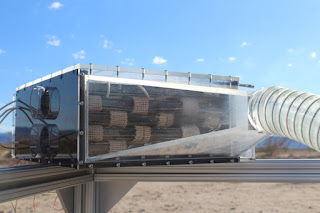Is It a Flying Saucer or a Solar Car?

UC Berkeley Students' Solar Car Zephyr Source: UC Berkeley Heading into Road Race Competition at the American Solar Challenge Engineering students at UC Berkeley have built a road-ready, registered solar car called Zephyr. To say the least, the vehicle is eye-catching. It closely resembles a flying saucer. But, it is a fully functional solar/electric powered car. Zephyr has been cleared for driving and has a California license plate. The UC Berkeley student inventors are putting Zephyr into national competition. It's heading for the 5 day, 1,000 mile road race between Independence, Missouri and Las Vegas, N.M. called the American Solar Challenge, which is a race among solar c...





